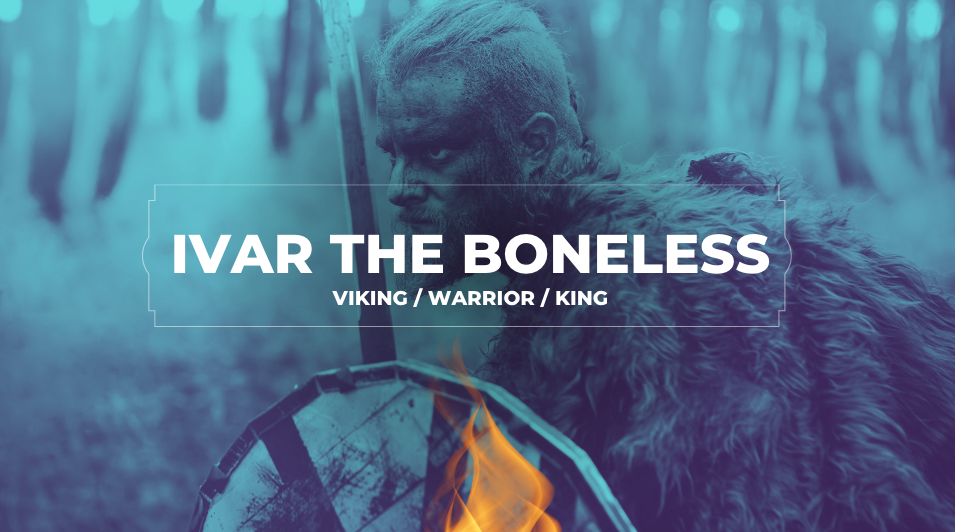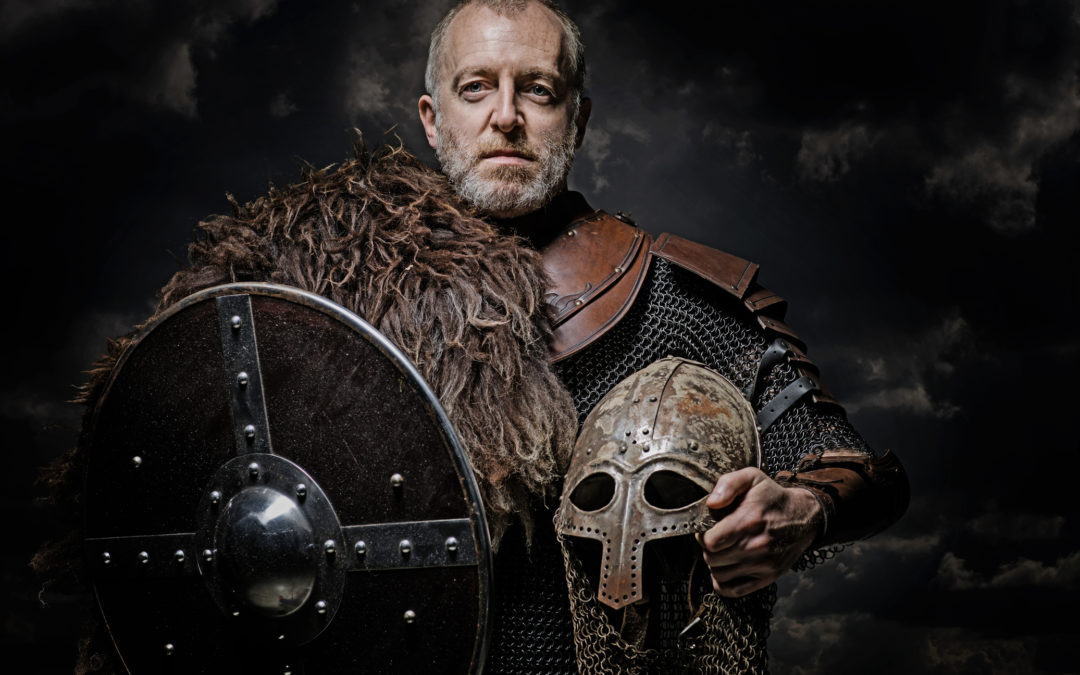
Historical, Warrior
Delving into the annals of Viking history, one name that stands out in bold resonance is Ivar the Boneless. A formidable leader of the Norsemen, Ivar etched his mark through invasions of Anglo-Saxon England. Unraveling his enigmatic persona reveals a tapestry woven with intrigue, prowess, and legacy.
A Mysterious Moniker
The appellation “Ivar the Boneless” has intrigued historians and linguists alike. Rooted in Old Norse, Ívarr hinn Beinlausi, its meaning remains elusive. Translated as “Ivar legless” or “boneless,” it lends an air of mystique to his character. However, interpretations diverge, with some sources hinting at figurative implications, possibly connected to male impotence.
The Saga of Origin
Hailing from the lineage of the legendary Ragnar Loðbrok and his third wife, Aslaug, Ivar’s lineage was marked by both storied heritage and celestial wisdom. Born with a unique physicality, his weak bones were attributed to a curse, the consequence of his father’s impetuousness. Aslaug, a völva, had forewarned Ragnar of the dire repercussions of untimely consummation, a premonition tragically ignored.
Beyond Physical Constraints
While the sagas weave tales of Ivar’s physical limitations, they are juxtaposed with accounts of his brilliant mind and strategic acumen on the battlefield. His sagacity and tactical prowess set him apart, transcending the confines of his bodily form. Ivar’s legacy embodies the resilience of spirit over corporeal impediments.
The Complex Legacy
Ivar’s influence extended beyond his invasions. Often linked to Ímar, the Uí Ímair dynasty’s founder, his dominion spanned Northumbria and the Kingdom of Dublin, casting a long shadow over the Irish Sea region. A legacy punctuated by both martial conquests and political dominion, his impact resonated for generations.
Conclusion
Ivar the Boneless emerges as a paradoxical figure, where physical frailty belied a prodigious intellect and strategic brilliance. His saga intertwines with the broader tapestry of Viking lore, leaving an indelible mark on the pages of time. As we unravel the layers of his enigmatic moniker, we glimpse the tenacity of a leader whose legacy endures through the ages.
The Workout
20:00 AMRAP
10x Push-Ups
10x 90-Degree Box Jumps
10x Lunges (Per Leg)

Warrior, Woman
In Norse mythology, a valkyrie (/vælˈkɪəri, -ˈkaɪri, vɑːl-, ˈvælkəri/; from Old Norse valkyrja “chooser of the slain”) is one of a host of female figures who choose those who may die in battle and those who may live.
Valkyrie
30:00 CAP
10-9-8-7-6-5-4-3-2-1 Burpees
1-2-3-4-5-6-7-8-9-10 Box Jumps
10-9-8-7-6-5-4-3-2-1 Pull-Ups
1-2-3-4-5-6-7-8-9-10 Goblet Squats 55#/35#

Monster
The kraken ()[1] is a legendary cephalopod-like sea monster of gigantic size in Scandinavian folklore. According to the Norse sagas, the kraken dwells off the coasts of Norway and Greenland and terrorizes nearby sailors. Authors over the years have postulated that the legend may have originated from sightings of giant squids that may grow to 13–15 meters (40–50 feet) in length. The sheer size and fearsome appearance attributed to the kraken have made it a common ocean-dwelling monster in various fictional works. The kraken has been the focus of many superstitious sailors passing the North Atlantic and especially sailors from the Nordic countries due to their proximity and its Scandinavian origin. Throughout the centuries the kraken has been a staple part of sailors’ superstitions and mythos being heavily linked to sailors’ ability of telling a tall tale.
The Kraken
For time (30:00 CAP)
5x Rounds
5x Thrusters 45#/35#
5x Pull-ups
4x Rounds
7x Box Jumps 20″
7x Toes-to-bar
3x Rounds
10x DB Alt Arm Snatch 50#/35#
10x Goblet Squat 50#/35#
2x Rounds
15x KBS 75#/55#
15x Burpees
1x Rounds
30x Clean & Jerks 95#/75#

Historical, Warrior
In Germanic mythology, Thor (; from Old Norse: Þórr, runic ᚦᚢᚱ þur) is a hammer-wielding god associated with thunder, lightning, storms, sacred groves and trees, strength, the protection of mankind and also hallowing and fertility. Besides Old Norse Þórr, extensions of the god occur in Old English as Þunor and in Old High German as Donar (runic ᚦᛟᚾᚨᚱ þonar). All forms of the deity stem from a Common Germanic *Þunraz (meaning thunder).
Thor is a prominently mentioned god throughout the recorded history of the Germanic peoples, from the Roman occupation of regions of Germania, to the Germanic expansions of the Migration Period, to his high popularity during the Viking Age, when, in the face of the process of the Christianization of Scandinavia, emblems of his hammer, Mjölnir, were worn and Norse pagan personal names containing the name of the god bear witness to his popularity.
THOR (the not-Marvel version)
10-9-8-7-6-5-4-3-2-1 (30:00 CAP)
‘Thor Complex’
Power Clean + Push Press + Front Squat 95#/65#
200m Plate Carry 45#/35#
Lateral Jumps Over Bar
Hand Release Push-ups




